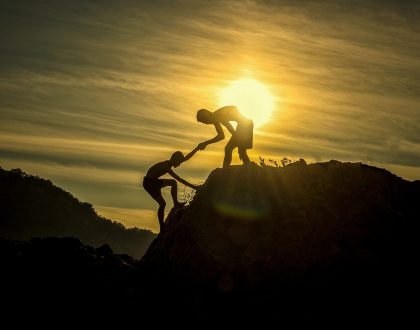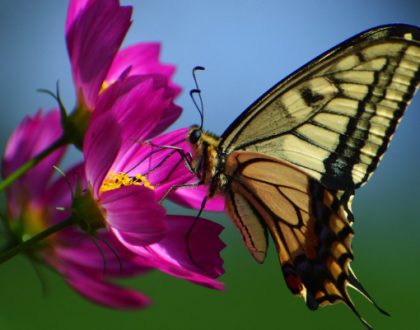PE, Social, and Emotional Education – High School

Course Features
Course Details
Course Overview
The Acellus PE, Social, and Emotional Education - High School course focuses on the importance of living socially, emotionally, and physically healthy lives. The course helps students learn to cultivate strong, caring relationships and good attitudes and to understand the importance of one's overall well-being. Throughout the course, Dr. Pajet Monet inspires positivity, which will empower students to face the day-to-day challenges they will encounter in the real world.
Sample Lesson - Where Do You Go?
 This course was developed by the International Academy of Science.
Learn More
This course was developed by the International Academy of Science.
Learn More
Scope and Sequence
Students approach this course with an overview of its scope and with a goal of balancing the social, emotional, and physical aspects of their lives. They consider their ability to choose to build their lives into exactly what they want them to be. They probe the idea of willingness, even in the face of discomfort or disappointment, and how it can change their lives. They scrutinize their ability to change their perception of life experiences by choosing a positive attitude. They learn what emotions are and how they can be controlled. They explore the connection between their thoughts and their emotions. They examine the power of a grateful attitude to help them be in control of their own lives, their emotions, and their responses. They analyze what it means to be what they really are – to do what they really like to do, without worrying about what others think. They examine the power of choosing and owning the choices they make. They explore the importance of acting in accordance with procedures and rules to stay safe, how to use the Internet safely, and the difference between acting with courage and acting recklessly. They consider how they can deal with difficult situations appropriately. They explore the concept that making good choices will make each day a wonderful, fulfilling part of their lives. They consider the idea that they can choose, right now, who they will become and let that vision guide them. They examine how developing positive habits will enrich their lives, and they start on the process of making goals to achieve their dreams. They realize that they can control the impact that others can have on them and that they can use negative or inappropriate input from others to strengthen their own characters. They study the attributes of a hero and realize that they can choose that road. They ponder how self-control can help them to more fully enjoy their lives, their possessions, and their friends. They discuss how integrity shapes one's character. They investigate how by choosing different attitudes, they impact the quality of their lives. They realize that they are like artists who are painting their lives, choice by choice, attitude by attitude. They delve into the activities that bring them into contact with the earth and that cause them to really work – to do real things. They examine their own ability to see more than just shapes and colors, but to see the amazing beauty, the underlying life systems, and the unexplainable wonders of our world. They discover how putting things off drains them of joy, but that pushing forward to make things happen increases the fullness of their lives. They discern that through perseverance they can achieve their dreams and that once they have decided what dreams they want to go after, they must then act to achieve them. They ponder their ability to change the world by giving of themselves. They find the joy in lifting others. They learn to look at experiences from different perspectives so that they can see how other people view things. They recognize that, like them, others have feelings, as well as their own points of view. They see that conflicts can be resolved with effort and caring. They understand that words must be chosen carefully to have the kind of influence that will make this world better, and that they have control over the friendships they make by the kinds of friends they choose to be. Students begin leadership training, discussing the use of encouragement, really caring, and making others feel respected and heard. They realize that manners are an important form of respect. They consider how, with positive self-esteem, they can lift others and become leaders who impact the world in a positive way. They investigate what stress is and how it can be managed. They understand that they can use breathing and other techniques and concepts to control their own emotions. They learn that they can let go of negative emotions to keep from being pulled down by adverse experiences or comments. Students learn to recognize the types of thoughts that tend to trap us so that they can stay free of them. They realize that they can select a place where they can go to find the peace and solitude that will enable them to clearly see their way forward. They explore the meaning of being able-bodied and fit, including the fundamental aspects and principles involved. They learn to warm up by stretching and investigate the results of an active life and the need to stretch differently for various sports. They become familiar with indications their bodies will give them that their efforts to become physically fit are working. They examine the function and importance of oxygen in the body, how it relates to aerobic capacity, and how they can maximize the latter. They study the games of baseball, basketball, and soccer, as well as track and field - specifically competitive sprinting. They learn how tennis, American football, and volleyball are played. They investigate what it means to be a "good sport." They discuss what a healthy fitness zone consists of and how and why they should get themselves into one. They explore how they can keep their muscles strong and flexible and increase their endurance. They realize that good posture is excellent exercise and promotes improved health. They consider what bones are made of and how they can be kept healthy and strong. They study what pacing is. They discover the importance of breathing. They examine their need for water, for eating a nutritious diet, and for being aware of whether the ingredients in the snacks they choose will contribute to or detract from their overall health and vigor. They learn what calories are and how we take them in and burn them. The course includes lesson-by-lesson assessments and a Mid-term and Final exam.
This course does not have any sections.






